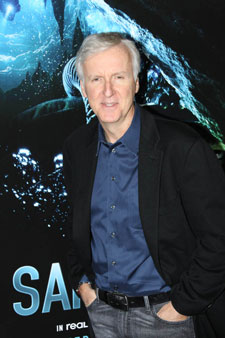
Isn’t James Cameron supposed to be heading back to Pandora?
James Cameron is heading down to the Mariana Trench, the world’s deepest point (nearly 7 miles beneath the surface of the ocean), sometime in the coming weeks. He’ll be making the deep-sea dive in his specially designed submersible as part of the DEEPSEA CHALLENGE, a scientific project Cameron’s involved in with the National Geographic Society and Rolex. Cameron’s journey will be the first scientific exploration into the Mariana Trench by a manned vehicle.
The goal of the project is “to conduct deep-ocean research and exploration to expand our knowledge and understanding of these largely unknown parts of the planet.”
Announcing the dive, Cameron stated, “The deep trenches are the last unexplored frontier on our planet, with scientific riches enough to fill a hundred years of exploration. National Geographic, which has been exploring the world for nearly 125 years, is the ideal partner to help usher in a new era of deep-ocean research and exploration that supports leading scientific institutions in answering questions about the deepest, unexplored parts of the Earth. Our goal is to build a scientific legacy for generations to come. It’s also to inspire people across the globe to celebrate exploration and to explore with us online and through the media we produce.”
“Some believe the golden age of exploration is behind us. On the contrary, I believe we are at the beginning of our greatest age of exploration,” said Terry Garcia, National Geographic’s executive vice president for Mission Programs. “We salute James Cameron for his commitment to science and exploration, and we are delighted to be part of this groundbreaking adventure to the deepest and least explored point on Earth.”
If all goes as planned, Cameron (a National Geographic Explorer-in-Residence) will be spending six hours on the bottom of the Pacific Ocean trench, collecting samples for research in marine biology, microbiology, astrobiology, marine geology, and geophysics.






